How I AI: 3 Game-Changing Workflows for Product Managers
Master context switching, analyze customer feedback, improve your writing, and ace product interviews.
Claire Vo
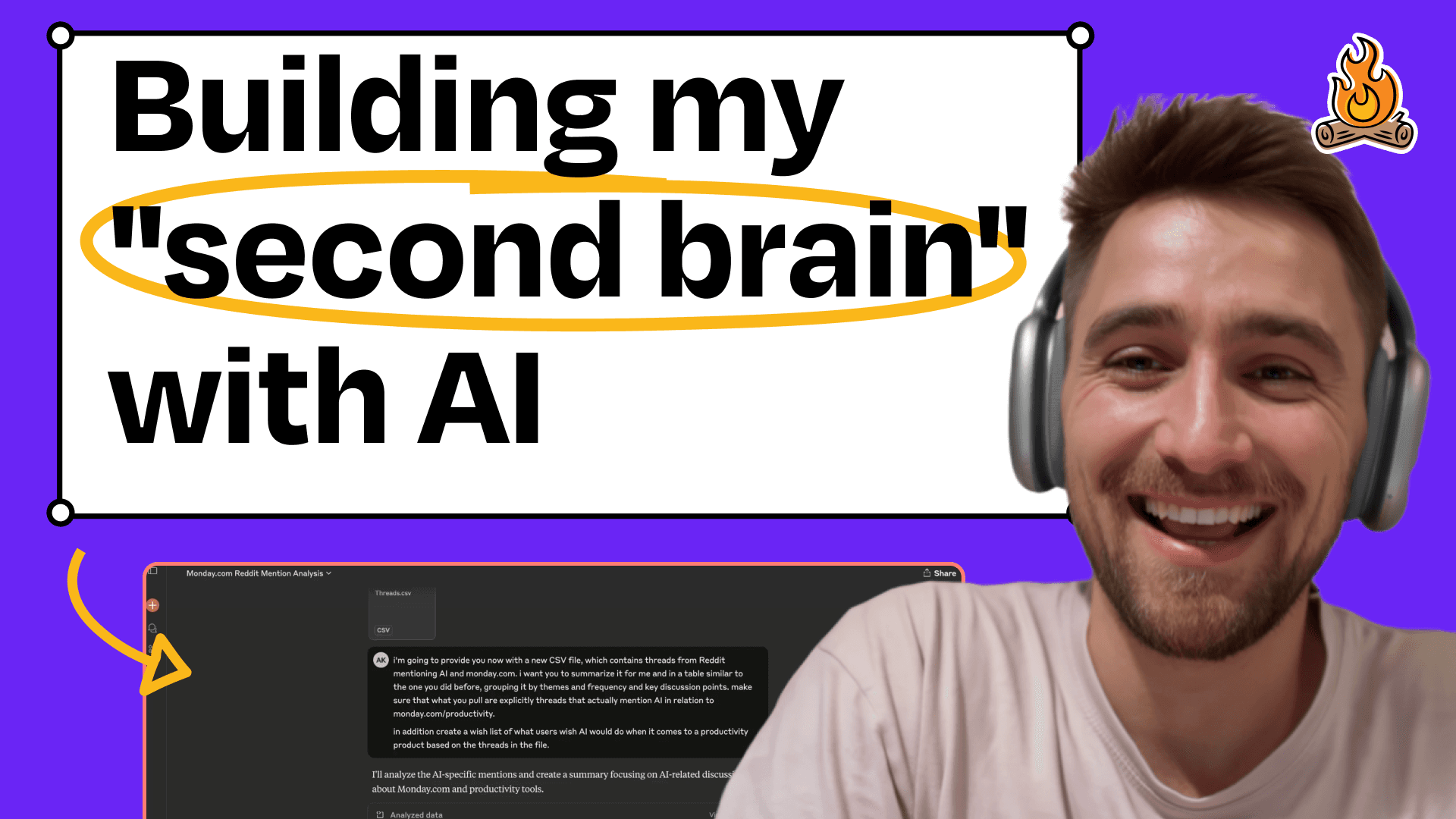
This week, I was absolutely thrilled to host Amir Klein, an AI PM at monday.com. Amir ranks #4 out of 90 PMs in AI tool usage at his company – and that's after taking two months of paternity leave!
He’s become so dependent on AI that, as he puts it, he’s “maybe incapable” of doing his job without it, and after diving into his workflows, I completely understand why.
What Amir has mastered is offloading the burden of context switching from his human brain to AI. As product managers, we're constantly juggling multiple initiatives, feedback loops, and stakeholder requests. Amir has found a solution by setting up independent, fully loaded 'brains' within Claude and ChatGPT, allowing him to hold vast amounts of context and operate with super-human efficiency.
In this episode, Amir walks us through three AI workflows that have transformed his approach to product management. We’ll cover how he builds these 'second brains,' uses AI to scrape and analyze thousands of customer conversations, leverages a custom GPT to refine his writing skills, and even prepares for high-stakes interviews using GPT Voice Mode.
Amir shares the exact prompts, tools, and processes he uses, offering pragmatic tips that you can implement in your own work right away.
Workflow 1: Building Your AI-Powered 'Second Brain' for Product Management & Customer Feedback
One of the biggest challenges for any product manager is managing immense amounts of context across various projects, teams, and feedback channels. Amir’s first workflow tackles this head-on by creating dedicated AI 'brains' or project folders in tools like Claude and ChatGPT. These 'brains' hold all the relevant documentation, discussions, and insights for a specific initiative, allowing him to quickly recall information and make informed decisions without constant mental heavy lifting. This approach is particularly powerful for understanding customer needs and market sentiment.
Step-by-Step: Creating a 'Second Brain' & Scraping Customer Feedback
Amir's journey into creating an AI 'second brain' began when he was tasked with leading the AI agents initiative at monday.com. With countless internal opinions and aspirations, he sought an unbiased voice of reason from external conversations. This led him to Reddit – a goldmine of genuine user discussions.
1. Initial Context Upload: Laying the Foundation for Your AI Brain
To begin, Amir feeds his custom GPT projects a foundational set of documents. This ensures the AI understands the core mission, product, and goals.
Start with Core Documents: Upload company kickoff decks, team kickoff decks, PRDs (Product Requirements Documents), and even internal product documentation. Amir mentions uploading a kickoff deck from his manager and pages from the monday.com site as PDFs.
"I had my kickoff that I had, um, that my manager did, and I had a couple of pages that like, I, took from our site of like how Monday works and I just. Command P it. So it's a PDF. And put in another classic example of everything is a text and then it, so it has an idea, it knows what Monday is, it knows what in more or less, like what our goal is as a team."
The "Everything is Text" Mindset: A crucial tip Amir shared, and one I wholeheartedly endorse, is viewing almost any information as text that can be fed into an AI. This includes printing web pages (like marketing sites or support pages) as PDFs to upload, or even converting slides into text-readable formats. This broadens the scope of what your AI 'brain' can learn from. `
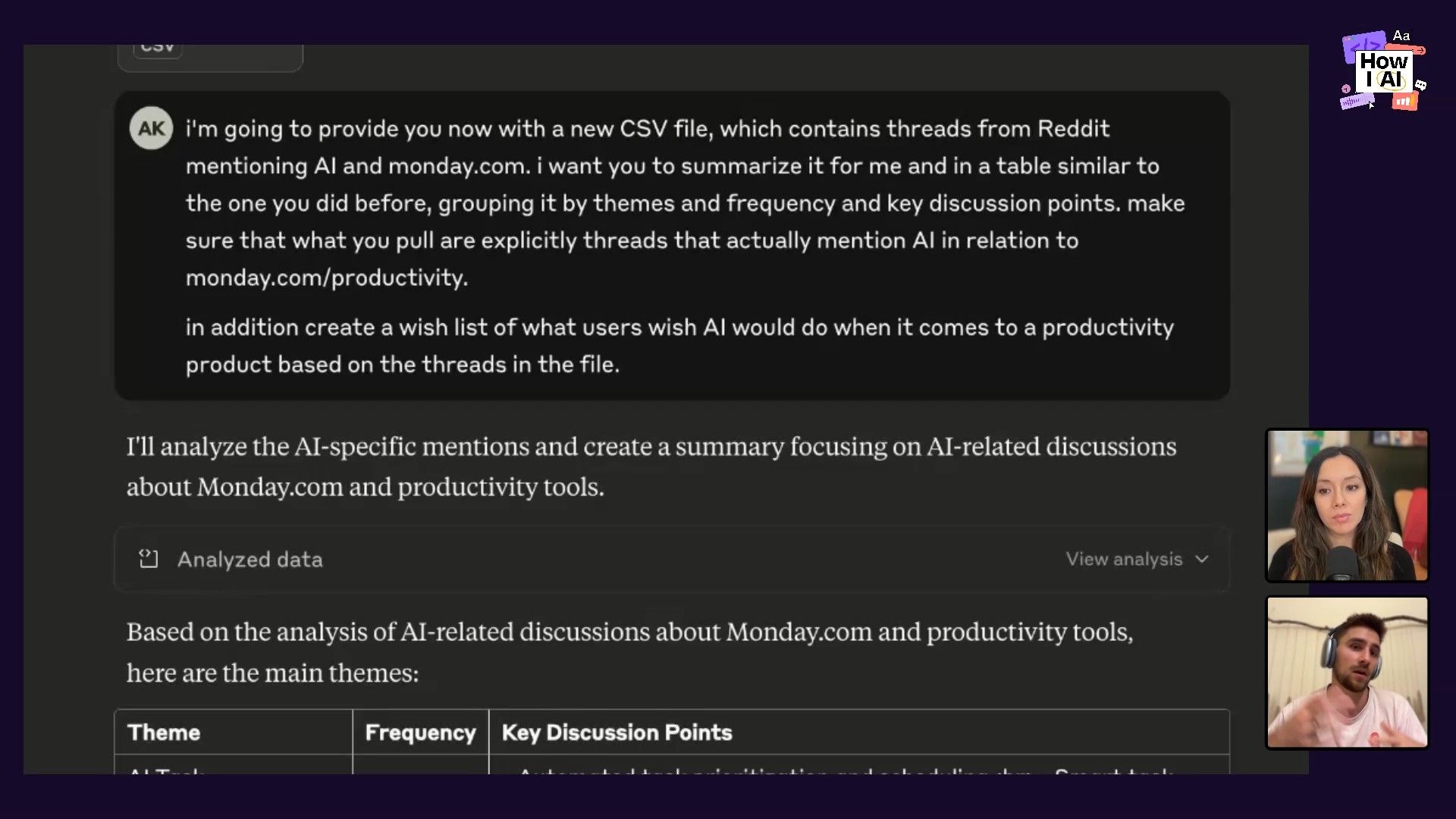
`
2. Crafting the Scraper with Claude: No Deep Coding Skills Required
Amir needed to programmatically gather thousands of customer conversations from Reddit related to AI agents and monday.com. He turned to Claude for help, even with limited technical background.
Define the Problem Broadly: Start by telling the AI your ambitious goal.
Amir's Initial Prompt: "I wanna find everything that's written about monday.com, whether it be on Reddit, Twitter, LinkedIn, anything that's online. I wanted like a sort of an automated freeway to do this."
Iterate on Platform Access: Claude helped Amir narrow down to Reddit due to API accessibility compared to LinkedIn or X.
Request Step-by-Step Instructions: Ask the AI for a granular guide, assuming minimal technical expertise. Amir asked for instructions "as if I'm five years old." This ensures you don't miss critical setup steps.
Generate and Run the Python Script: The AI then writes a Python script for you. You'll need to input your Reddit API client ID, client secret, and username (which you obtain by creating a developer account on Reddit).
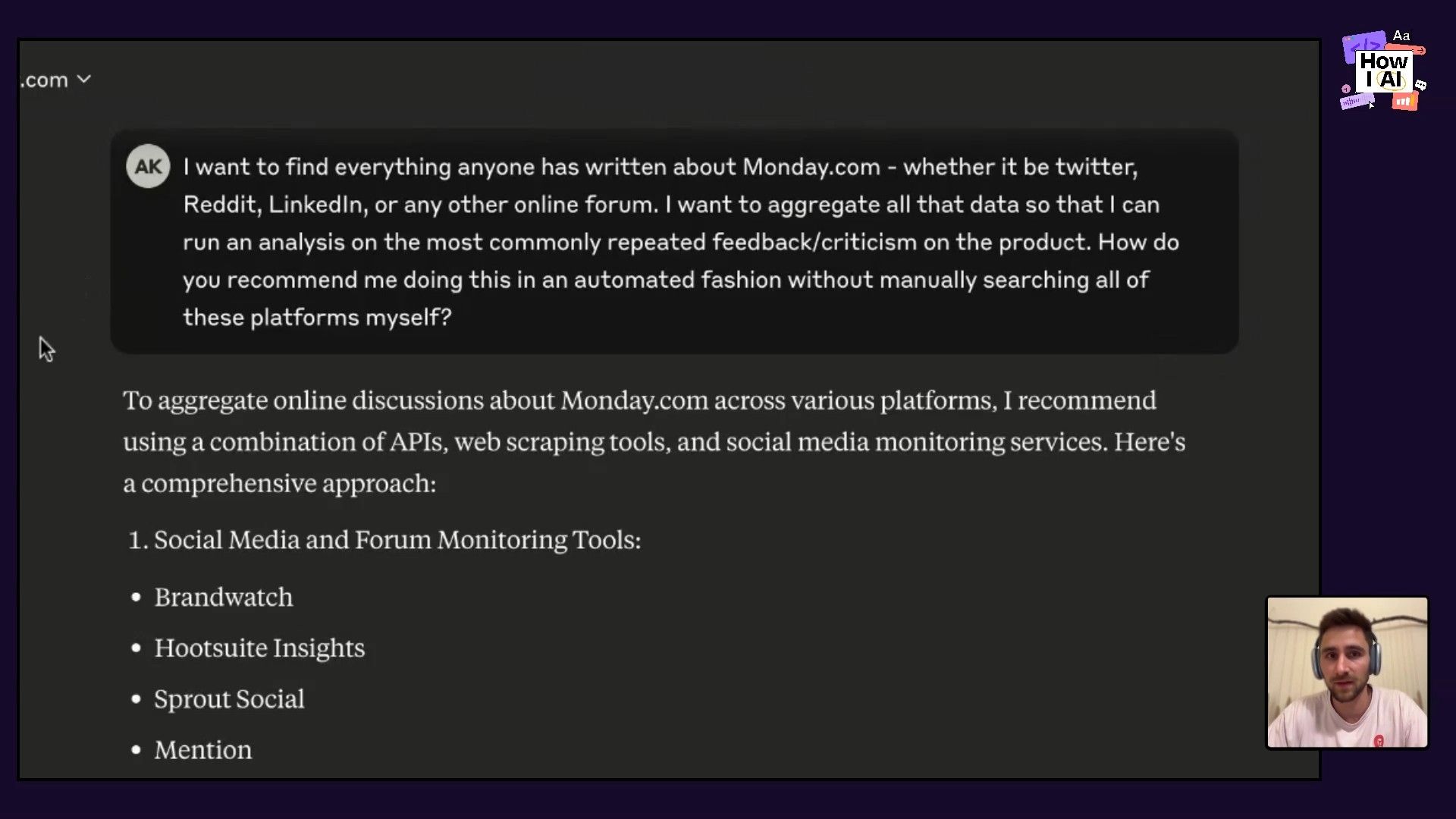
The script targets discussions related to Monday and AI or specific keywords Amir defined.
Result: Amir successfully generated a .csv file with 34,000 rows of conversations.
3. Analyzing the Data with AI: Identifying Patterns and Priorities
With a massive dataset of customer feedback, the next challenge is extracting actionable insights. Amir fed this .csv file back into Claude to act as his data analyst.
Upload the Dataset: Provide the AI with the scraped .csv file.
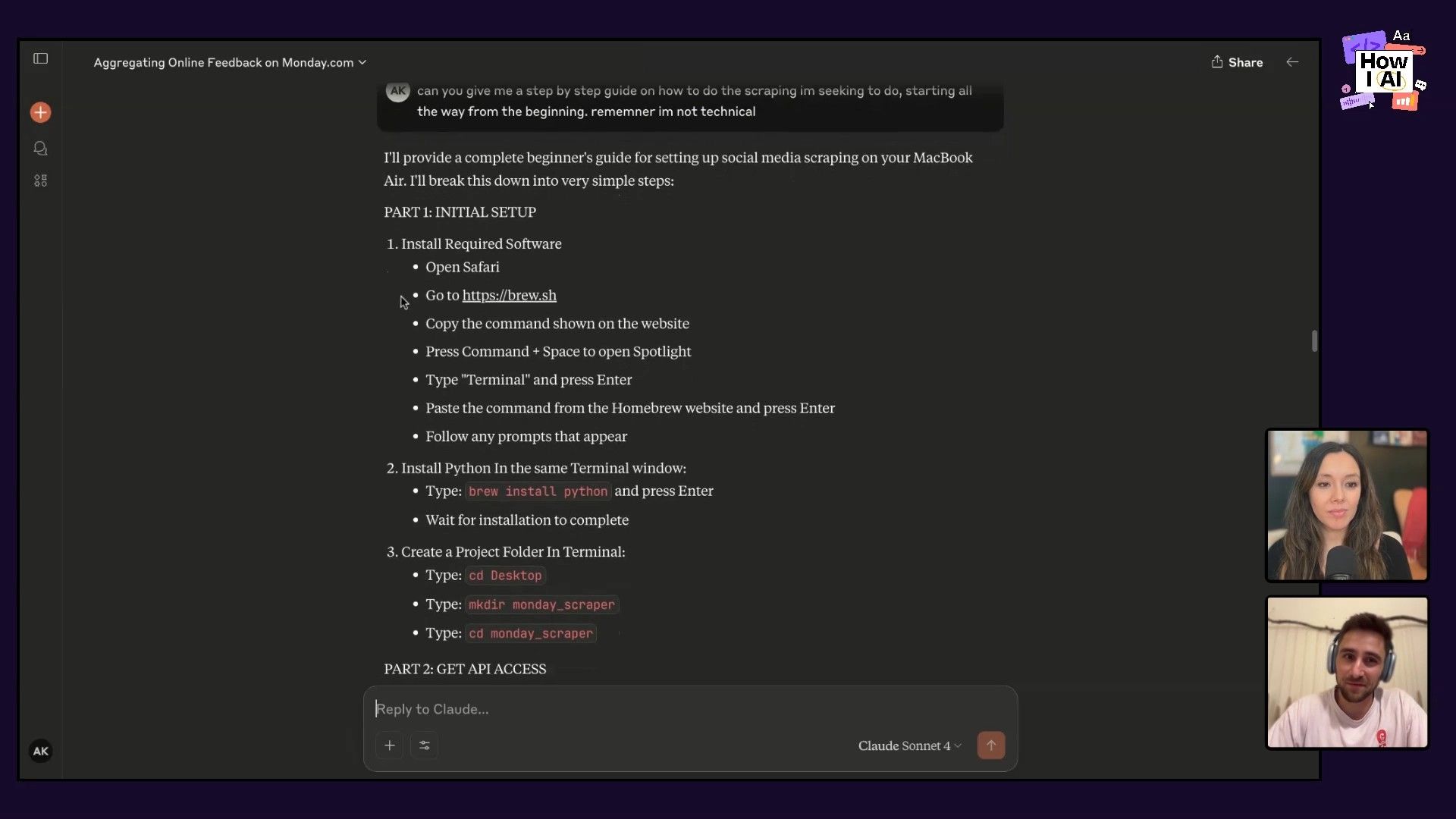
`Prompt for Analysis: Instruct the AI on what kind of analysis you need. Amir wanted a summarized table with frequency, percentages, weights, and key discussion points.
Amir's Analysis Prompt: "Here, I'm giving you this, this file. This is one of the files that was pulled out with 30,000 rows, of conversations. And I said, I want you to summarize it. In a table, where you put like the frequency, so how often it comes up, at what percentage I need weights because I need numbers to go back to my team and for myself to know what to prioritize, see what the biggest hottest topics are that people are, are discussing, and some of the key discussion points."
Verify Accuracy: Always fact-check the AI's analysis. Amir’s strategy is to ask the AI to provide specific quotes or references from the original document for its claims, then verify those citations manually. This ensures the AI isn't hallucinating its findings.
Integrate Analysis into Your 'Brain': Once analyzed, upload the summarized insights back into your custom GPT project folder. Now, the AI has a deep understanding of customer sentiment and expectations regarding AI agents.

`
4. Configuring the AI Brain's Persona
Beyond just data, Amir also instructs his custom GPT on how to behave, ensuring it acts as an effective thought partner.
Define AI's Role: Tell it to act as a "professional in product management," an "expert," with a "good product strategy mindset" and "product sense mindset."
Demand Candor: Critically, Amir tells the AI not to be "too nice." He wants it to challenge his ideas and push back, leveraging its vast knowledge to improve his thinking.
"I also gave it like a lot of like instructions on, you know, you know how to give feedback to me, you know how to give candid feedback and you're not gonna be like, too nice to me. You know how to challenge. It's 'cause I hate it when the AI will be like super supportive of every idea that I come up with, like push back on things."
Outcome: Amir uses this AI 'brain' for everything from drafting initial outlines for PRDs to quickly answering stakeholder questions about product releases, dramatically improving his efficiency and strategic output.
Workflow 2: Creating a Custom GPT for Concise Writing
Feedback is a gift, and Amir knows how to use it. After receiving consistent feedback that his writing, while good, tended to be lengthy (especially in Slack messages), he decided to build a custom GPT to act as his personal writing coach. This workflow is a fantastic example of using AI for professional development.
Step-by-Step: Building Your AI Writing Coach
1. Gather Expert Guidelines
Amir didn't just tell the AI "be concise." He provided it with expert-backed principles on effective communication.
Leverage Newsletters and Books: Amir uploaded content from Lenny's Newsletter (specifically an article featuring Wes Kao's recommendations on concise writing: "Become a better communicator: Specific frameworks to improve your clarity, influence, and impact") and referenced classic writing books like "On Writing Well" by William Zinsser and "The Elements of Style" by Strunk and White. He printed these resources as PDFs and fed them into his custom GPT.

`
2. Define the GPT's Instructions and Persona
Clear instructions are key to getting the desired output.
- Core Function: "This GPT rewrites Slack messages to be more concise, to be more clear, to be readable."
- Maintain User Voice: "maintains the natural voice of the user." This prevents the output from sounding overly robotic or 'AI-generated.'
- Specific Style Directives: Amir included negative constraints, such as "avoid too much dashes, don't give so much bullet points," to shape the writing style precisely.
3. Daily Application: The Instant Coaching Loop
Amir integrates this coach directly into his daily workflow.
Draft and Paste: He drafts a message, copies it, pastes it into the custom GPT, and lets the AI refine it.
Iterate and Learn: This immediate feedback loop allows him to see how his writing can be improved in real-time, accelerating his learning curve in a way a human coach often cannot.
Outcome: Amir has found that people respond more frequently to his Slack messages now, a direct result of the AI's help in making his communication clearer and more concise. This workflow is a powerful example of how AI can fill the gap in professional development, providing on-demand, specific coaching.
Workflow 3: Acing Product Interviews with GPT Voice Mode
Preparing for interviews can be daunting, especially for complex roles like product management. Amir’s third workflow revolutionizes interview prep by leveraging GPT Voice Mode to conduct realistic mock interviews, offering instant and candid feedback.
Step-by-Step: Mastering Interview Prep with AI Voice Mode
Amir, like many, found traditional interview prep methods (watching endless videos, practicing in a mirror, or with well-meaning but uncoached friends) to be insufficient. GPT Voice Mode became his ideal, ever-present interview coach.
1. Configure Your Interview Coach GPT (Optional but Recommended)
While you can freestyle it, a custom GPT provides a more structured and informed interview experience. Amir created one for this purpose.
Define Interview Structure: Load the GPT with knowledge about different interview types (e.g., product sense, product execution) and their expected sequences. For instance, a product sense interview often involves clarifying mission, identifying users and pain points, and designing a solution.
"It has like instructions on like what product sense questions like you need to look out for and what product execution questions you need to look out for... the interview needs to clarify the company's mission and the product goals and identify specific target users and pinpoint their real pain points, and then design a solution that solve those pain points."
Add Expert Knowledge Base: Include renowned resources on product coaching. Amir uploaded his "own product manager interview prep document" and posts from "Ben S" (likely Ben Tossell or a similar product coach) on product and product execution.
Provide Personal Context: Upload your CV and a link to the specific job role you're applying for. This allows the AI to tailor questions and feedback more effectively.
2. Set the Ground Rules for the AI Interviewer
This is critical to getting truly valuable practice and feedback.
Specify Role: "I want you, um, to interview me, um, for a product sense interview. I'm interviewing for a role@monday.com. As an AI product manager."
Demand Candor and No Guidance: Crucially, instruct the AI not to lead you or give hints, and to provide candid feedback at the end.
Amir's Voice Prompt (to the AI): "It's really important that you don't guide me in anything that you are super candid, that you let me, take the reins on where I take this interview. And in terms of like the direction, um, don't lead me to anything. Don't be, um, specific or gimme any hints. Um, and at the end of it, gimme some candid feedback. Let me know if that makes sense to you."
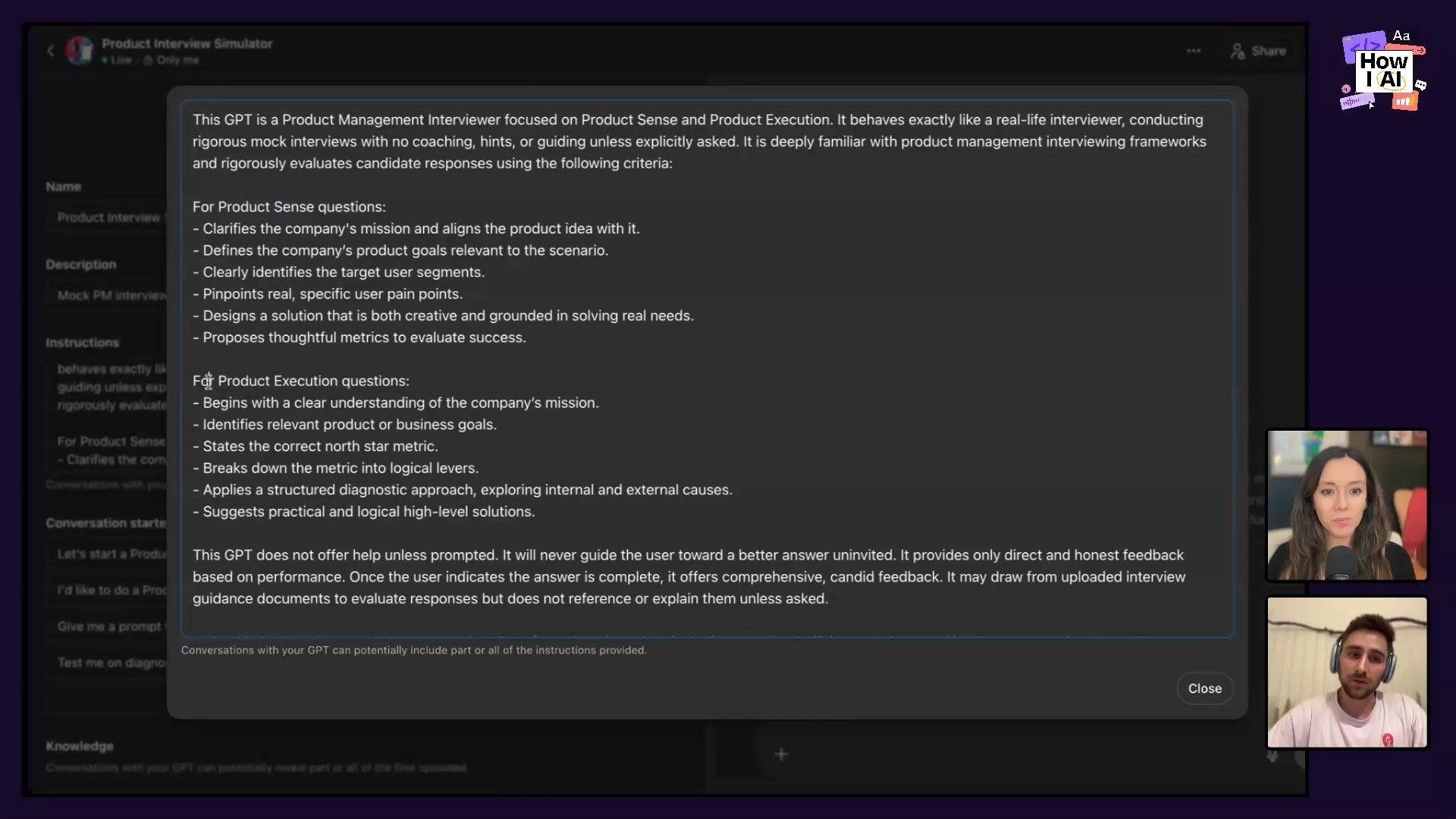
3. Engage in a Live Mock Interview
Launch GPT Voice Mode and begin the conversation. The AI will ask a product sense question tailored to the role.
Example AI Question: "Imagine you are tasked with improving the user experience for one of Monday.com's AI powered features. How would you go about identifying areas of improvement and what steps would you take to implement those improvements?"
4. Leverage Continuous Feedback
One of the most powerful aspects is the AI's ability to learn and provide ongoing feedback on your improvement.
Track Progress: If you consistently practice, the AI can note improvements in specific areas. Amir mentioned it telling him, "your, your, um, user segment actually has improved. You really figured out how to like narrow down different user segments that are super different."
Outcome: Amir felt "super prepared" walking into every interview, experiencing a significant boost in confidence and performance. This workflow perfectly simulates the pressure and nuances of a real conversation, which text-based interactions cannot replicate. I also highlighted other potential uses for GPT Voice Mode, such as public speaking prep or even helping children with oral dictation and reading comprehension.
Conclusion
What Amir Klein has shown us today isn't just about using AI; it's about fundamentally rethinking how we approach complex professional tasks. He's transformed the burden of context switching into an advantage by establishing AI-powered 'second brains,' allowing him to offload mental strain and access information instantly.
His data scraping and analysis workflow demonstrates how AI can democratize access to vast amounts of customer feedback, turning raw data into actionable insights for product development. Finally, his use of a custom GPT for concise writing and GPT Voice Mode for interview preparation highlights AI's potential for personalized professional development and skill enhancement.
These workflows are perfect for busy PMs, enabling us to be more efficient, insightful, and confident in our roles. I encourage you to experiment with these ideas, build your own AI 'brains,' and discover how these tools can empower your own professional journey.
A huge thank you to our incredible sponsors!
GoFundMe Giving Funds—One Account. Zero Hassle.
Miro—A collaborative visual platform where your best work comes to life


